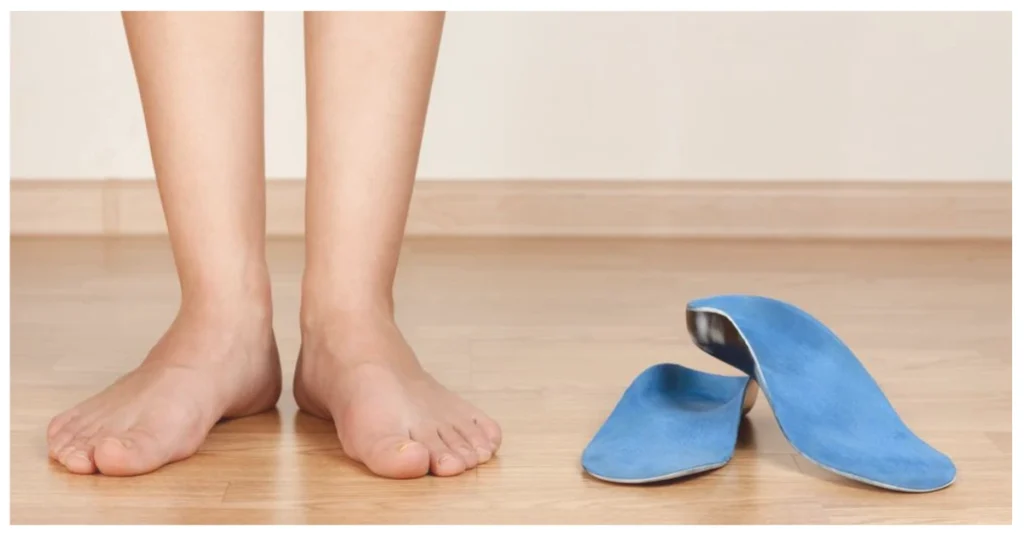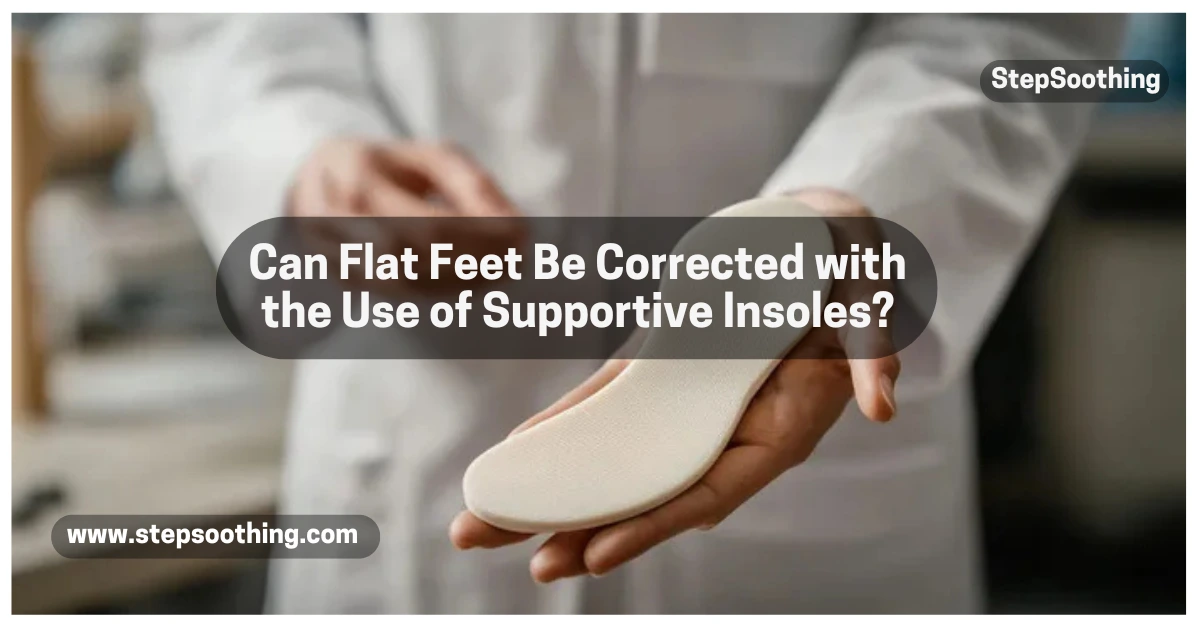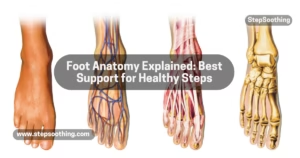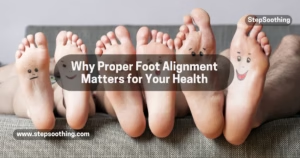Ever feel discomfort or pain while walking or standing for long hours? If so, your flat feet might be the culprit. Flat feet, also known as fallen arches, can lead to foot pain, poor posture, and even joint issues over time. Without proper arch support, daily activities can become uncomfortable, affecting mobility and overall well-being. This raises an important question: Can flat feet be corrected with the use of supportive insoles? while Supportive solutions for children with flat feet can also make a big difference when addressed early. it’s essential to understand the long-term impact of using insoles.
Do Insoles Really Help Flat Feet? Benefits, Limitations & Expert Tips

Understanding Flat Feet
Types of Flat Feet
Flat feet can be classified into two primary types:
- Flexible Flat Feet: The arch appears when the foot is non-weight-bearing but collapses when standing.
- Rigid Flat Feet: The foot remains flat even when not bearing weight, often due to bone or joint abnormalities.
Symptoms and Complications
Individuals with flat feet may experience:
- Foot pain and swelling
- Overpronation, leading to misalignment of the knees and hips
- Increased risk of plantar fasciitis, shin splints, and lower back pain
How Flat Feet Develop
Flat feet may be present from birth or develop due to factors such as:
- Genetics: A hereditary predisposition to low arches
- Obesity: Excess weight places additional strain on foot arches
- Injury or Arthritis: Damage to tendons and joints can weaken arch support
- Diabetes and Neurological Conditions: Affecting nerve function and muscle tone
Role of Supportive Insoles in Flat Feet Correction
How Insoles Work
Supportive insoles help distribute weight evenly, provide cushioning, and improve alignment. They function by:
- Offering arch support to reduce overpronation
- Absorbing shock to minimize stress on joints
- Improving posture and reducing strain on the lower body
Types of Insoles
Insoles vary in structure and material, catering to different needs:
- Over-the-Counter (OTC) Insoles: Affordable and widely available, suitable for mild cases
- Custom Orthotics: Prescribed by podiatrists for tailored support
- Materials Used: Foam for cushioning, gel for shock absorption, rigid plastic for structural support
If you’re wondering whether OTC insoles provide all-day comfort, check out our deep dive on flat feet insole comfort for daily use.
Scientific Evidence on Insole Effectiveness
Research supports the use of insoles for symptom relief rather than permanent correction. A study published in the Journal of Foot and Ankle Research (2019) found that custom orthotics significantly reduced foot pain in individuals with flat feet. Dr. Michael Nirenberg, a podiatrist, explains,
“While insoles can help with comfort and alignment, they do not fundamentally change the structure of the foot.”
Can Supportive Insoles Permanently Correct Flat Feet?
Managing Symptoms vs. Structural Correction
Insoles provide support and pain relief but do not alter the bone structure of the foot.
Effectiveness Based on Age Group
- Children: Since the arch is still developing, long-term use of orthotics may guide foot growth.
- Adults: Insoles primarily manage discomfort and improve gait but do not restore arch height.
Scenarios Where Correction May Be Possible
- Early intervention in children with flexible flat feet
- Combined use of insoles with strengthening exercises
Alternative Treatments for Flat Feet
Physical Therapy and Exercises
Strengthening and stretching exercises can enhance foot function:
- Toe Curls and Arch Lifts: Strengthen the intrinsic foot muscles
- Calf and Achilles Stretches: Reduce tension in the lower leg
- Balance and Stability Drills: Improve foot control and posture
Supportive Footwear Recommendations
- Shoes with built-in arch support
- Motion-control shoes for overpronation
Lifestyle Changes
- Weight management to reduce foot strain
- Avoiding prolonged standing without support
Surgical Options for Severe Cases
When conservative treatments fail, surgery may be considered, including:
- Tendon transfers to reinforce arch support
- Osteotomies (bone reshaping) to correct alignment
- Fusion surgeries for rigid flat feet
Choosing the Right Supportive Insoles
Factors to Consider
- Arch type (low, medium, high)
- Activity level and daily use
- Cushioning vs. firm support needs
Top-Rated Brands and Expert Recommendations
Podiatrists often recommend brands such as:
- Superfeet: Best for everyday wear
- Powerstep: Ideal for athletic use
- Custom Orthotics: For severe cases, prescribed by specialists
If you’re more active, here’s a guide on choosing the right insoles for athletic shoes to help you get better support during sports or training.
Insole Maintenance and Replacement
- Most insoles last 6–12 months with regular use
- Signs of wear include flattening, reduced support, and discomfort
Conclusion
Supportive insoles play a crucial role in managing flat feet by alleviating pain and improving posture. However, they do not provide a permanent cure, especially for adults. Combining insoles with exercises, proper footwear, and lifestyle modifications can lead to long-term symptom relief. Consulting a podiatrist is essential for severe cases or persistent discomfort. Don’t forget these tips for maintaining healthy feet as part of your daily routine.
People Also Asked on Flat Feet and Supportive Insoles
Can supportive insoles permanently fix flat feet?
No, insoles do not permanently correct flat feet. They provide support, improve alignment, and reduce pain, but they cannot structurally change the foot’s arch, especially in adults.
Are custom orthotics better than over-the-counter insoles for flat feet?
Custom orthotics offer personalized support and are more effective for severe cases, while OTC insoles provide general arch support and are suitable for mild discomfort. A podiatrist can help determine the best option.
Can children’s flat feet be corrected with insoles?
In some cases, yes. Since children’s arches are still developing, long-term use of supportive insoles combined with strengthening exercises may help promote natural arch formation.
How long should I wear insoles for flat feet?
Insoles should be worn daily for optimal support. However, they should be replaced every 6–12 months, depending on wear and tear.
What other treatments can help with flat feet besides insoles?
Physical therapy, strengthening exercises, supportive footwear, weight management, and in severe cases, surgery, can help manage symptoms and improve foot function.



